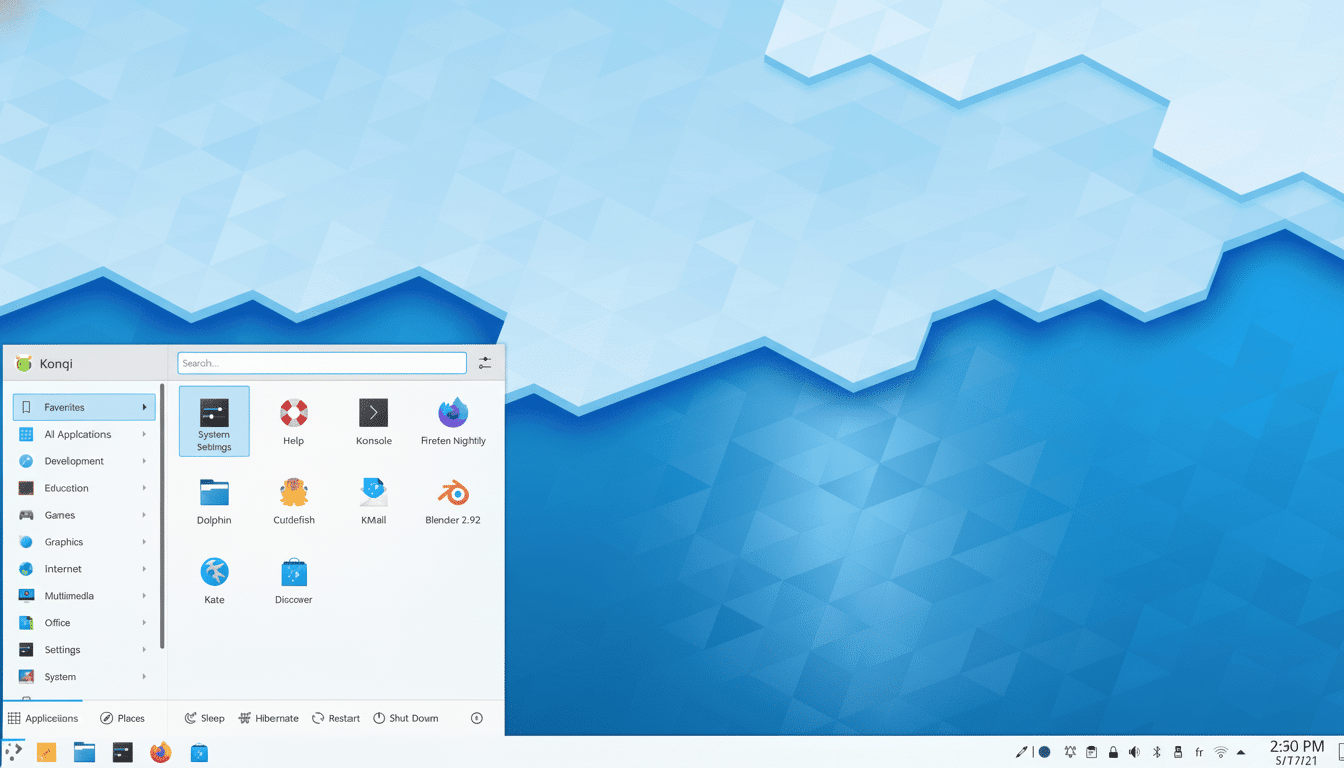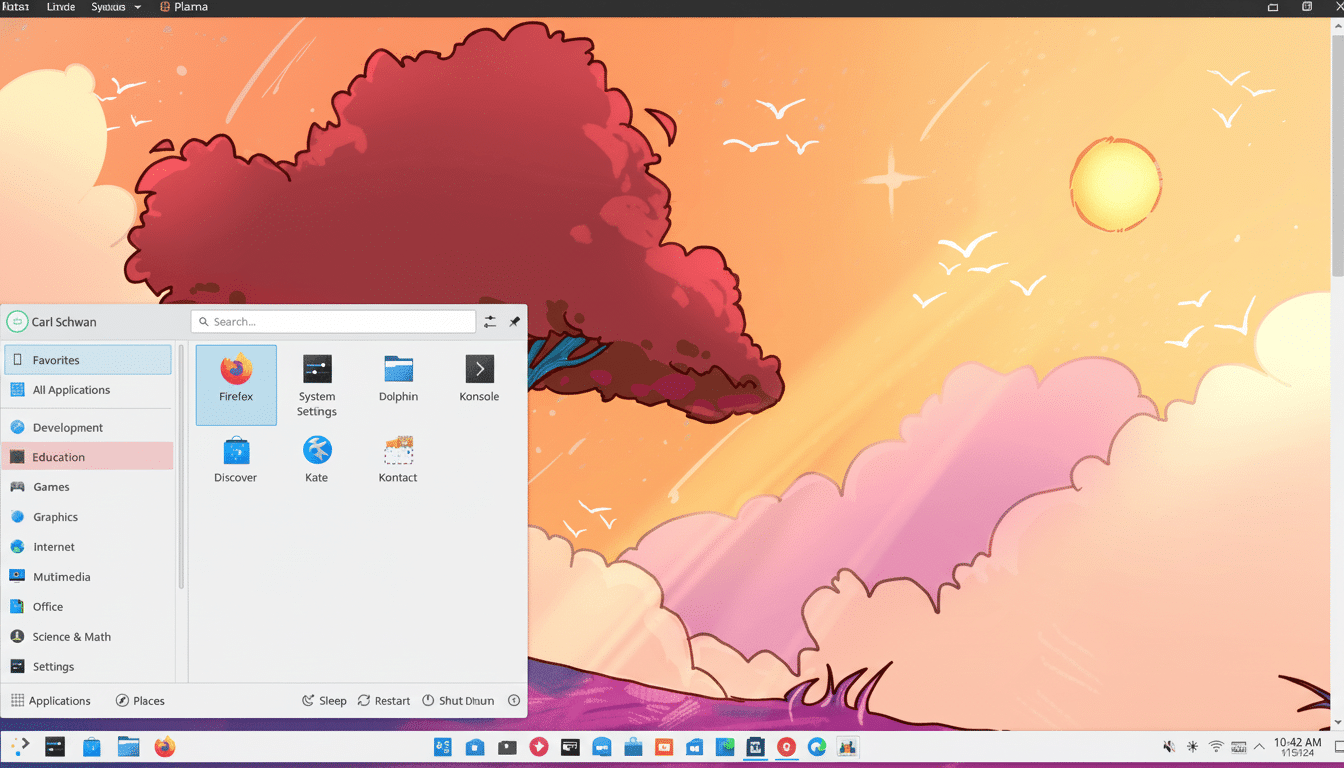Forget that old myth about how Linux is great for reviving older laptops. Modern kernels, first-class GPU support, and furious performance tuning are just some of the features laden on several free distributions tailor-made to make brand-new hardware sing. If you’ve just purchased a new desktop or ultrabook and are looking to maximize speed while minimizing bloat, these five options are worth serious consideration.
Developers have embraced new technology: recent 6.x series kernels deliver improved scheduler behavior, PCIe power management, and significantly enhanced graphics stacks. The Linux Foundation points out that tens of thousands of changes now land in kernel development per release, and a significant number of them are hardware enablement. Factor in driver maturity—especially for NVIDIA and AMD—and Linux can be both lean and stupid-fast on new PCs.
- What makes a fast, modern Linux on brand-new hardware
- Garuda Linux: Arch-based speed with Zen kernel options
- Fedora Workstation: upstream-first, polished, and fast
- Pop!_OS: seamless NVIDIA/AMD support and COSMIC
- CachyOS: tuned kernels and CPU-specific optimizations
- Ubuntu LTS: reliable HWE kernels and driver support
- Bottom line: choosing the fastest Linux for new PCs

What makes a fast, modern Linux on brand-new hardware
Two factors matter more than any others: kernel cadence and graphics. The HWE (hardware enablement) and rolling-release kernels bring support for the newest chipsets, Wi‑Fi cards, and power states. For graphics, AMD users are often happy with Mesa’s open drivers, while NVIDIA users frequently prefer a distro that makes the proprietary driver install easy. Valve’s Steam hardware survey still has NVIDIA dominating discrete GPUs (though less so in recent iterations), so straight-up NVIDIA support is almost a realistic necessity.
Desktop environment options and filesystems matter as well. A lightweight Plasma session or tuned GNOME session can save you a lot of RAM and CPU cycles, while Btrfs with transparent compression can speed up reads on fast NVMe drives. Standalone benchmarks from sources like Phoronix corroborate that kernel configurations such as Zen or a CachyOS-tuned build can lower latency and improve interactivity when the system is under load.
Garuda Linux: Arch-based speed with Zen kernel options
Garuda perches on the rolling base of Arch, because performance is always first-class. Some editions come with the low-latency, snappy Linux Zen kernel—great for multitasking on multi-core machines and gaming rigs. There’s also Btrfs with Zstd compression, plus handy snapshots, so you can push the system hard and still roll back with ease.
Garuda has friendly tools, curated defaults, and easy access to the AUR to make up for that Archness. For new PCs with high-resolution and high-refresh-rate monitors, and for some recent GPUs with their own display outputs, this means a quick, flicker-free boot-up.
Fedora Workstation: upstream-first, polished, and fast
The appeal of Fedora is easy to understand: upstream-first, fast-paced, and polished. It comes with the latest kernels and Mesa stacks, so you can have new CPUs, iGPUs, and Wi‑Fi chipsets almost instantly (usually within the same development cycle). Wayland is the default (and blissfully well-integrated), and KDE Plasma or other Spins are available if you prefer not to have GNOME’s tight squeeze.
The Fedora Project keeps a direct path to NVIDIA driver support open—while other distributions make you disable Secure Boot to use them, a click and a reboot is all that’s needed here.
Nothing will stand between your computer and even the most recently released games: its SELinux defaults, sandboxed apps, and best-in-class virtualization are at this operating system’s core. The end result is a workstation that’s “vanilla” in the good way—clear, fast, and close to upstream.

Pop!_OS: seamless NVIDIA/AMD support and COSMIC
Pop!_OS—and the accompanying hardware built by System76—was designed for creators and gamers who want things to “just work.” It provides separate ISOs for NVIDIA and Intel/AMD graphics as well as hybrid graphics laptops. After installation, users can choose between proprietary NVIDIA drivers (enabling 3D gaming) or the FOSS equivalent—available in its repositories—thanks to a stable base with persistent settings. The auto-tiling workflow will allow you to multitask better, particularly if you have a multi-monitor configuration.
Pop’s new COSMIC desktop, written in Rust, aims to be responsive and efficient while keeping keyboard-driven productivity at the forefront. System76 ensures device enablement on its own hardware line, and optimizations that work their way back to generic PCs—think firmware improvements via the LVFS project or power profiles that work across generations of CPUs.
CachyOS: tuned kernels and CPU-specific optimizations
CachyOS is a speed freak for anyone who’s got to go fast, on an Arch base and with a friendly installer. What makes it shine is its custom kernels and x86_64 microarchitecture-tuned packages (v3/v4), link-time optimization, and the BORE scheduler. On new desktops with recent Intel or AMD chips, those changes can lead to snappier compiles and lower input latency; Phoronix has seen similar performance improvements from architecture-tuned builds across workloads.
The CachyOS Hello app and guided setup assist you in choosing the right CPU optimizations and filesystems from the start. It’s not the most beginner-friendly choice in this list, but if you want measurable performance tuning on fresh silicon, CachyOS delivers without forcing you to hand-edit everything.
Ubuntu LTS: reliable HWE kernels and driver support
Ubuntu LTS continues to be the reliable, fast default for many new PCs through its HWE kernel stream. As point releases are dropped, the LTS picks up support for newer kernels, GPUs, and firmware—if your machine is new enough to be running the latest mobile CPUs or discrete graphics. Canonical’s “Additional Drivers” utility makes installing NVIDIA easier, and AMD finally has good Mesa in the official repositories.
But speed isn’t Ubuntu’s only superpower: with a large community behind it, you also benefit from certified hardware lists and smooth firmware updates via the Linux Vendor Firmware Service. You get a predictable base with an enormous software library that will not hinder new hardware.
Bottom line: choosing the fastest Linux for new PCs
If you want no compromises on freshness and visual panache, or a distribution that makes driver installs and gaming painless, here are quick picks:
- Garuda: no compromises on freshness and a lot of visual panache.
- Fedora: upstream clean lines and fast-moving updates from a big project.
- Pop!_OS: fully working plug-and-play NVIDIA with a ready-to-go desktop for day-to-day tasks.
- CachyOS: run as fast at the kernel level, optimized for a brand-new CPU.
- Ubuntu LTS: consistent value with regular hardware support.
No matter which path you decide on, your route is going to be an up-to-date kernel with a GPU driver path in step with the hardware. If you want every last frame and millisecond on your PC, consider a lean desktop like Plasma. For today’s hardware, Linux isn’t merely competitive with other operating systems; it can actually be the fast lane.

